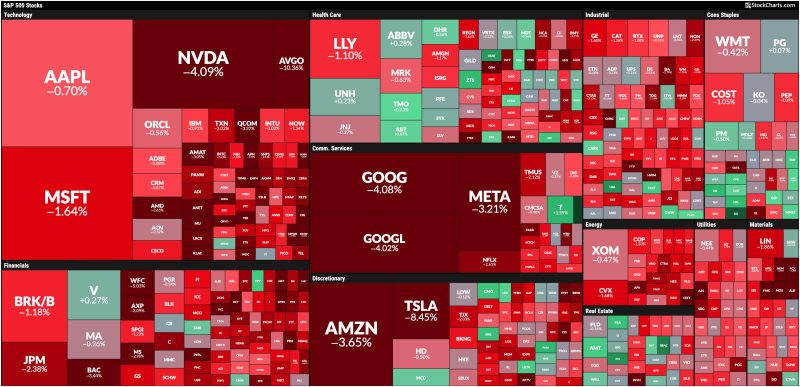In times of a broad-based stock market selloff, understanding how to position your portfolio becomes essential to mitigate risks and potentially benefit from market downturns. While market fluctuations are a normal part of investing, a sudden and significant decline can be alarming for investors. By implementing strategic approaches and maintaining a diversified portfolio, individuals can be better equipped to navigate through turbulent market conditions.
Assess Your Risk Tolerance
One crucial aspect of positioning your portfolio amidst a selloff is to evaluate your risk tolerance. Understanding how much risk you are comfortable with can help tailor your investment strategy accordingly. Conservative investors may opt for a more defensive approach during a market downturn, with a higher allocation towards fixed-income securities and defensive stocks. On the other hand, aggressive investors might view a selloff as an opportunity to capitalize on undervalued assets and potentially increase their exposure to equities.
Diversification Is Key
Diversification is a fundamental strategy that can help manage risk during market selloffs. By spreading your investments across different asset classes, geographical regions, and sectors, you can reduce the impact of a downturn on your overall portfolio. While diversification does not guarantee immunity against losses, it can help cushion the impact of market volatility. Rebalancing your portfolio periodically to maintain an appropriate asset allocation is also crucial in ensuring diversification benefits.
Consider Quality Investments
During a broad-based stock market selloff, investors may seek refuge in quality investments that have a track record of stability and strong fundamentals. Blue-chip stocks, established companies with consistent earnings, and dividend-paying securities are examples of quality investments that can withstand market turbulence better than speculative or high-risk assets. Conduct thorough research and due diligence before committing to any investment, especially during uncertain market conditions.
Stay Informed and Stay Calm
Amidst a stock market selloff, it is essential to stay informed about market developments, economic indicators, and geopolitical events that could impact the financial markets. However, it is equally important to remain calm and avoid making impulsive decisions based on short-term market movements. Market downturns can create opportunities for long-term investors, and selling investments out of fear can lead to missed opportunities for potential recovery and future growth.
Implement Risk Management Strategies
Implementing risk management strategies such as stop-loss orders, hedging techniques, and asset allocation adjustments can help protect your portfolio during a market selloff. Stop-loss orders automatically sell a security when it reaches a predetermined price, limiting potential losses. Hedging with options or inverse exchange-traded funds (ETFs) can provide downside protection in a declining market. Assess your risk management strategies regularly to ensure they align with your investment objectives and risk tolerance.
In Conclusion
Navigating through a broad-based stock market selloff requires a combination of caution, strategy, and resilience. By assessing your risk tolerance, maintaining a diversified portfolio, considering quality investments, staying informed, and implementing risk management strategies, you can position your portfolio to weather market downturns effectively. Remember that investing is a long-term endeavor, and market volatility presents opportunities as much as challenges. Consult with a financial advisor to tailor your investment strategy to your individual circumstances and financial goals.

